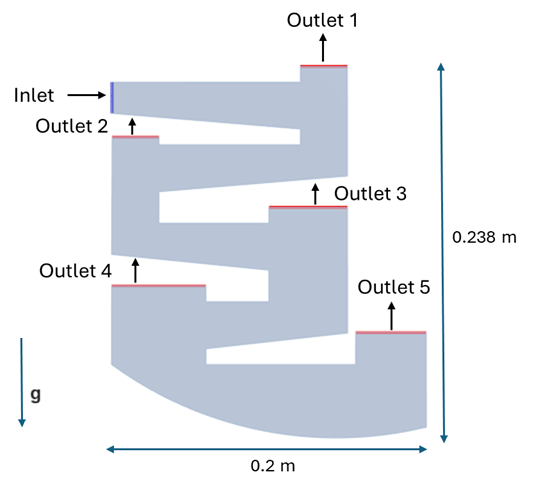Eulerian: Mixture Settling
Settling tanks/separators are widely used in the industry for the purpose of separating a fluid mixture into its gaseous and liquid phases. Separator designs include horizontal and vertical configurations that account for different stages of the process, ranging from absorbing the momentum of incoming fluid to achieving the desired phase separation.
In this tutorial, you simulate the process of mixture settling and separation of two phases—water and air—that enter a multi-step separator as a dispersed mixture. The separator geometry is characterized by one inlet and five outlet boundaries. The outlet boundaries are designed for the exit of air, while water is expected to settle at the bottom due to the density difference between the phases. The distinct flow rates for each phase in the mixture are determined by setting different velocities for water and air. The mixture consists of 20% water and 80% air (by volume fraction). The separator is initially filled with air.
The following schematic diagram shows the configuration:

A two-dimensional mesh is used to represent the separator.
The Eulerian Multiphase (EMP) model is used to simulate the separation and settling processes of the air-water mixture. The interaction between air and water is modeled with the Multiple Flow Regimes topology model. This model is suitable where both segregated and dispersed two-phase flows coexist within the same domain. In addition, you select the Large Scale Interface Detection (LSI) phase interaction model and the Adaptive Interface Sharpening (ADIS) volume-fraction convection scheme to simulate the large scale interfaces and identify sharp interfaces between phases.
As a result, the animation of volume-fraction of water illustrates the separation of the air-water mixture. In addition, the mass balance plots illustrate that during the simulation runtime, water accumulates within the domain while air steadily exits it.